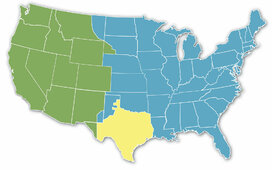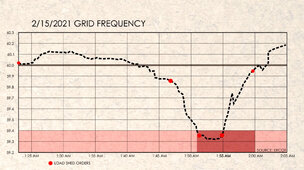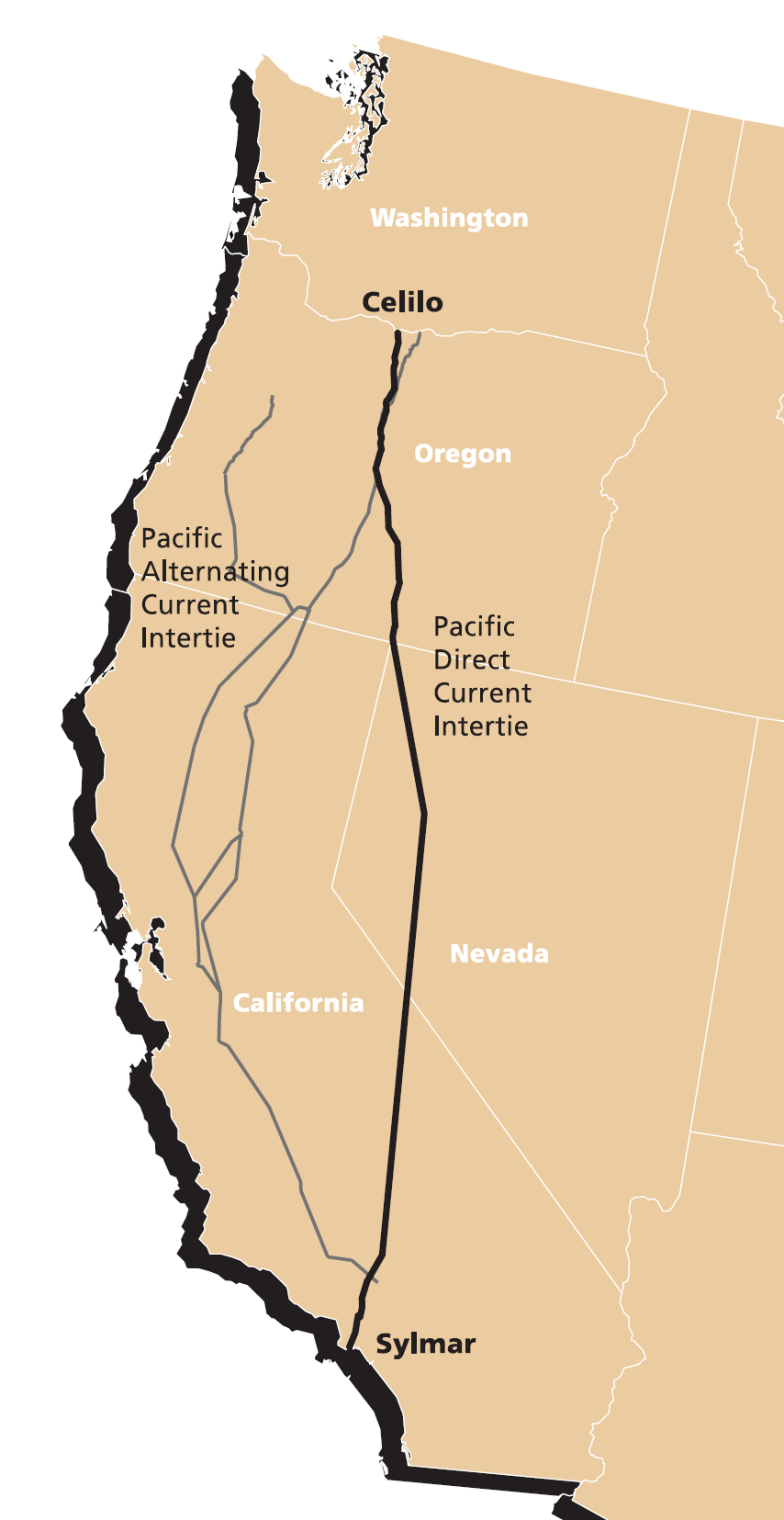So all I have to do is supply a cheap voltage outputter and I can fool the inverters into working when grid goes downIt has nothing to do with loads.
It's the loss of voltage.
You are using an out of date browser. It may not display this or other websites correctly.
You should upgrade or use an alternative browser.
You should upgrade or use an alternative browser.
How exactly does grid-tied hybrid inverter detect loss of grid?
- Thread starter SeaGal
- Start date
Here is how victron detects grid outage
To detect a loss of mains, the inverter/charger will constantly try to shift the AC frequency. When connected to a stable grid, with a normal accepted impedance, it will not be possible to do so, and it can therefore detect that the mains is still present. In case the mains was lost, the inverter/charger will be able to shift the frequency at will, without any resulting correction currents.
To detect a loss of mains, the inverter/charger will constantly try to shift the AC frequency. When connected to a stable grid, with a normal accepted impedance, it will not be possible to do so, and it can therefore detect that the mains is still present. In case the mains was lost, the inverter/charger will be able to shift the frequency at will, without any resulting correction currents.
Here's an article presenting various anti islanding methods.
The Mainspro is a Grid Protection relay not a Grid Tie inverter but it is used to provide Grid Tie functionality to a non Grid Tie setup.
It is G99 approved for the UK as of version 1.6 but its functionality means you can use the setup function to meet most Electricity providers requirements. The guide covers all the potential criteria that can be monitored and acted upon.
It is G99 approved for the UK as of version 1.6 but its functionality means you can use the setup function to meet most Electricity providers requirements. The guide covers all the potential criteria that can be monitored and acted upon.
MajicDiver
Solar Enthusiast
It’s good learning for the methods it presents, but it does not claim to be presenting all or even the best methods that exist.Here's an article presenting various anti islanding methods.
And thanks for pointing to the study, not complaining- just pointing out it’s a very complex subject and any single source will not give a complete picture.
timselectric
If I can do it, you can do it.
- Joined
- Feb 5, 2022
- Messages
- 18,615
Yes, until the grid-tied inverter pushes current to that source. When that happens and if the source cannot take it, the really bad day begins.So all I have to do is supply a cheap voltage outputter and I can fool the inverters into working when grid goes down
RCinFLA
Solar Wizard
- Joined
- Jun 21, 2020
- Messages
- 3,565
Microinverters or hybrid inverters cannot detect a grid open circuit by voltage. The grid is 'immovable' in terms of trying to pull the phase. The microinverters are not and they follow the master (grid). They require near continuous phase tracking correction from the master grid AC zero crossings.I am interested to know the answer as well. And if your neighborhood is highly solarized why wouldn't 50 or 100 microinverters tend to go into island mode?
I suspect it has something to do with a necessary higher voltage for export.
It is the utility power alternators rpm's that determines the grid frequency.I think many here don’t understand what this means or misunderstand it. I will try to explain further what you are saying, hopefully I don’t muddy it more:
1) the “grid” is huge. If you want to speed the grid up (increase the frequency) you must supply enough power to the grid to measurably increase the speed of every single motor on the grid. Not just your neighbors, but everyone in your county, state and neighboring states. In the US there are several large regions that form their own “grid” I forget exactly how many.
Utilities have to predict the network load versus time of day in advance to 'stoke the coals' enough to have enough generators online with enough steam (literally) to produce the demanded power. When they make the call wrong, and only prepare for lower demand, all alternators get overloaded and slow down a small amount. When they get the call wrong with too much generation capability, all the power generation alternators speed up in rpm's, increasing the grid frequency a bit. Utilities within the same color grid can share power making it easier for power demands to average out.
Nuclear power plants are slowest to react to changes in power demand. Natural gas turbo-shaft jet engine power plants are the quickest to react to changes in power demand. They are sometimes called 'turbine peakers'. (good name for a stiff drink)
There are three major independent phased grids in the continental U.S.. All power stations within the same-colored areas are in phase synchronization. In the eastern grid, your little PV system would have to overwhelm and shift the frequency of every utility power plant from Florida to North Dakota.

The yellow 'don't mess with Texas' grid is independent and not phase synchronized to other major grids so they cannot share power from their neighbor states' grids. This got them in big trouble during the Feb 2021 ice storm/freeze. The graph below is what happened to their grid frequency as their alternators got overloaded from all the electric heating turned on when it got cold. They were within a couple of minutes of a total grid 'black' shutdown and had to drop large sections of service areas to avoid a catastrophic 'black' system shutdown. Restarting a grid from a total 'black' shutdown can take days to accomplish and needs to be avoided at all cost.

Last edited:
Yes, in fact, if you have a specific model of inverter... hard to say which control algorithm it's going to use... not much open source in this sector lolIt’s good learning for the methods it presents, but it does not claim to be presenting all or even the best methods that exist.
And thanks for pointing to the study, not complaining- just pointing out it’s a very complex subject and any single source will not give a complete picture.
within minutes of a total shutdown? scaryMicroinverters or hybrid inverters cannot detect a grid open circuit by voltage. The grid is 'immovable' in terms of trying to pull the phase. The microinverters are not and they follow the master (grid). They require near continuous phase tracking correction from the master grid AC zero crossings.
Number of motor's on the grid has nothing to do with frequency.
It is the utility power alternators rpm's that determines the grid frequency.
Utilities have to predict the network load versus time of day in advance to 'stoke the coals' enough to have enough generators online with enough steam (literally) to produce the demanded power. When they make the call wrong, and only prepare for lower demand, all alternators get overloaded and slow down a small amount. When they get the call wrong with too much generation capability, all the power generation alternators speed up in rpm's, increasing the grid frequency a bit. Utilities within the same color grid can share power making it easier for power demands to average out.
Nuclear power plants are slowest to react to changes in power demand. Natural gas turbo-shaft jet engine power plants are the quickest to react to changes in power demand. They are sometimes called 'turbine peakers'. (good name for a stiff drink)
There are three major independent phased grids in the continental U.S.. All power stations within the same-colored areas are in phase synchronization. In the eastern grid, your little PV system would have to overwhelm and shift the frequency of every utility power plant from Florida to North Dakota.
View attachment 197024
The yellow 'don't mess with Texas' grid is independent and not phase synchronized to other major grids so they cannot share power from their neighbor states' grids. This got them in big trouble during the Feb 2021 ice storm/freeze. The graph below is what happened to their grid frequency as their alternators got overloaded from all the electric heating turned on when it got cold. They were within a couple of minutes of a total grid 'black' shutdown and had to drop large sections of service areas to avoid a catastrophic 'black' system shutdown. Restarting a grid from a total 'black' shutdown can take days to accomplish and needs to be avoided at all cost.
View attachment 197025
a bill was just introduced last week to have Texas join the national grid. It has probably ZERO chance of being passed.
OK, so this phase shift is constantly tested against the grid and whereas the grid is fixed and won't budge other inverters would themselves 'follow' the shift attempt and allow the shift to change.Yes it does. It periodically pushes a phase wiggle against grid to test that grid is still present.
I am guessing then, that:-
a) all inverters attempt to shift in one direction (e.g. faster) so they don't fight against each other.
b) the measured cut out time for my Solis is around 220ms to 380ms depending on load, according to the test sheet, so at 50Hz, that is a disconnection within just 11 cycles of main, and that includes the relay release time - so that's some going! Guess these inverters must be trying to push the frequency on every single cycle then to observe and react that quickly.
So the next question is 'how'? what component is actually doing this - presumably a MOSFET or IGBT?
RCinFLA
Solar Wizard
- Joined
- Jun 21, 2020
- Messages
- 3,565
Yes, they generally try to raise frequency.I am guessing then, that:-
a) all inverters attempt to shift in one direction (e.g. faster) so they don't fight against each other.
b) the measured cut out time for my Solis is around 220ms to 380ms depending on load, according to the test sheet, so at 50Hz, that is a disconnection within just 11 cycles of main, and that includes the relay release time - so that's some going! Guess these inverters must be trying to push the frequency on every single cycle then to observe and react that quickly.
If grid is present to resist any phase shift attempt the current will suddenly change on the inverter. It detects this quickly and concluded grid is present and valid, as long as frequency and voltage is within acceptable limits also. If grid is not present either the frequency or voltage will shift causing inverter to shutdown.
Voltage shift is not usually fast enough to meet shutdown time requirements. Current spike due to phase shift 'attempt' is near immediate response time. It has to be time averaged a slight amount due to the fact that grid voltage glitches due to large loads being turned on and off can also cause current spikes on the inverter.
MajicDiver
Solar Enthusiast
I concur with everything you state except “The number of motors on grid have nothing to do with frequency “. Of course they don’t and that’s not what I said. The number of motors (and everything thing else who’s load draw is effected by frequency) and also the number of generators absolutely impacts how much power it takes to increase grid frequency. For a single generation device to increase grid frequency it would have to be able produce enough power to pick up substantial load from other generators as well as the additional load that would be present (at least momentarily) by motors and other devices.Number of motor's on the grid has nothing to do with frequency.
It is the utility power alternators rpm's that determines the grid frequency.
The point was, the reason your “wiggle “ works is an inverter can’t effect grid frequency.
hwy17
Anti-Solar Enthusiast
I would like to add an asterisk here that the Texas interconnection has no synchronous power sharing but there are a handful of asynchronous ties. 2 DC to Eastern and 1 VFT to Mexico. They're not huge, but they exist.The yellow 'don't mess with Texas' grid is independent and not phase synchronized to other major grids so they cannot share power from their neighbor states' grids.
hwy17
Anti-Solar Enthusiast
Don't worry it was clear to me as a reader he had misread your intended meaning.I concur with everything you state except “The number of motors on grid have nothing to do with frequency “. Of course they don’t and that’s not what I said.
dc as in direct current??I would like to add an asterisk here that the Texas interconnection has no synchronous power sharing but there are a handful of asynchronous ties. 2 DC to Eastern and 1 VFT to Mexico. They're not huge, but they exist.
hwy17
Anti-Solar Enthusiast
Yes. We use it inside the grids too. But it's especially applicable for ties between separate grids.dc as in direct current??

Pacific DC Intertie - Wikipedia
Wow. I had no idea that DC could be transported at high voltages. My mind is blown right now.Yes. We use it inside the grids too. But it's especially applicable for ties between separate grids.

Pacific DC Intertie - Wikipedia
en.wikipedia.org
Also from your link
One advantage of direct current over AC is that DC current penetrates the entire conductor as opposed to AC current which only penetrates to the skin depth. For the same conductor size, the effective resistance is greater with AC than DC, hence more power is lost as heat with AC. In general, the total cost for HVDC is less than an AC line if the line length is over 500–600 miles, and with advances in conversion technology, this distance has been reduced considerably. A DC line is also ideal for connecting two AC systems that are not synchronized with each other. HVDC lines can help stabilize a power grid against cascading blackouts since power flow through the line is controllable
So the next question is 'how'? what component is actually doing this - presumably a MOSFET or IGBT?
Just relays.
The Solis Hybrid is just one inverter (bidirectional) with relays that connect the AC side of that inverter to the grid and backup ports...
The normal situation (with grid) has both relays closed, so everything is connected together: inverter output, grid and backup.
If it detects grid loss it will open the grid relay, so the inverter output is now only connected to the backup output. I assume the inverter control algorithm then switches from grid tied to simple UPS inverter.
That's how it does uninterrupted backup output ; some other hybrids don't do that, when they lose the grid they reboot to change mode so you lose power on the backup output for a minute.
HighDesertOffgrid
Solar Addict
- Joined
- Sep 15, 2022
- Messages
- 628
That seems beg the question, how much wiggling can the grid take as more and more residential solar wigglers are added? Do solar farms wiggle?The point was, the reason your “wiggle “ works is an inverter can’t effect grid frequency.
Us non-wigglers want to know.
MajicDiver
Solar Enthusiast
Unfortunately, the vast majority of utility sized turbine generators wiggle badly, especially in the older coal plants, but even new machines in modern combined cycle plants present continuous struggles with the tendency for all mechanical devices such as valves and actuators to stick. No inverter can wiggle as much as a utility sized steam turbine.That seems beg the question, how much wiggling can the grid take as more and more residential solar wigglers are added? Do solar farms wiggle?
Us non-wigglers want to know.
Similar threads
- Replies
- 7
- Views
- 252
- Replies
- 14
- Views
- 551
- Replies
- 7
- Views
- 475


